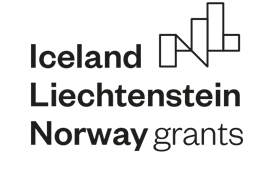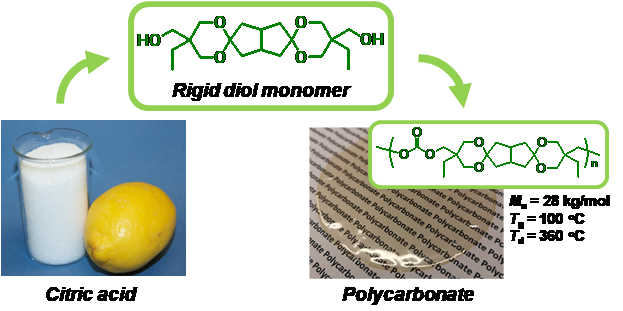-
Faculty of Arts and HumanitiesDean's Office, Faculty of Arts and HumanitiesJakobi 2 ruumid 116–121, 51005 Tartu linn, EST0Institute of History and ArchaeologyJakobi 2 51005 Tartu linn, Tartu linn, Tartumaa EST0Institute of Estonian and General LinguisticsJakobi 2, IV korrus 51005 Tartu linn, Tartu linn, Tartumaa EST0Institute of Philosophy and SemioticsJakobi 2, III korrus, ruumid 302-337 51005 Tartu linn, Tartu linn, Tartumaa EST0Institute of Cultural ResearchÜlikooli 16 51003 Tartu linn, Tartu linn, Tartumaa EST0Institute of Foreign Languages and CulturesLossi 3 51003 Tartu linn, Tartu linn, Tartumaa EST0School of Theology and Religious StudiesÜlikooli 18 50090 Tartu linn, Tartu linn, Tartumaa EST0Viljandi Culture AcademyPosti 1 71004 Viljandi linn, Viljandimaa EST0Professors emeriti, Faculty of Arts and Humanities0Associate Professors emeriti, Faculty of Arts and Humanities0Faculty of Social SciencesDean's Office, Faculty of Social SciencesLossi 36 51003 Tartu linn, Tartu linn, Tartumaa EST0Institute of EducationJakobi 5 51005 Tartu linn, Tartu linn, Tartumaa EST0Johan Skytte Institute of Political StudiesLossi 36, ruum 301 51003 Tartu linn, Tartu linn, Tartumaa EST0School of Economics and Business AdministrationNarva mnt 18 51009 Tartu linn, Tartu linn, Tartumaa EST0Institute of PsychologyNäituse 2 50409 Tartu linn, Tartu linn, Tartumaa EST0School of LawNäituse 20 - 324 50409 Tartu linn, Tartu linn, Tartumaa EST0Institute of Social StudiesLossi 36 51003 Tartu linn, Tartu linn, Tartumaa EST0Narva CollegeRaekoja plats 2 20307 Narva linn, Ida-Virumaa EST0Pärnu CollegeRingi 35 80012 Pärnu linn, Pärnu linn, Pärnumaa EST0Professors emeriti, Faculty of Social Sciences0Associate Professors emeriti, Faculty of Social Sciences0Faculty of MedicineDean's Office, Faculty of MedicineRavila 19 50411 Tartu linn, Tartu linn, Tartumaa ESTInstitute of Biomedicine and Translational MedicineBiomeedikum, Ravila 19 50411 Tartu linn, Tartu linn, Tartumaa ESTInstitute of PharmacyNooruse 1 50411 Tartu linn, Tartu linn, Tartumaa ESTInstitute of DentistryL. Puusepa 1a 50406 Tartu linn, Tartu linn, Tartumaa ESTInstitute of Clinical MedicineL. Puusepa 8 50406 Tartu linn, Tartu linn, Tartumaa ESTInstitute of Family Medicine and Public HealthRavila 19 50411 Tartu linn, Tartu linn, Tartumaa ESTInstitute of Sport Sciences and PhysiotherapyUjula 4 51008 Tartu linn, Tartu linn, Tartumaa ESTProfessors emeriti, Faculty of Medicine0Associate Professors emeriti, Faculty of Medicine0Faculty of Science and TechnologyDean's Office, Faculty of Science and TechnologyVanemuise 46 - 208 51003 Tartu linn, Tartu linn, Tartumaa ESTInstitute of Computer ScienceNarva mnt 18 51009 Tartu linn, Tartu linn, Tartumaa ESTInstitute of GenomicsRiia 23b/2 51010 Tartu linn, Tartu linn, Tartumaa ESTEstonian Marine Institute0Institute of PhysicsInstitute of ChemistryRavila 14a 50411 Tartu linn, Tartu linn, Tartumaa EST0Institute of Mathematics and StatisticsNarva mnt 18 51009 Tartu linn, Tartu linn, Tartumaa EST0Institute of Molecular and Cell BiologyRiia 23, 23b - 134 51010 Tartu linn, Tartu linn, Tartumaa ESTTartu ObservatoryObservatooriumi 1 61602 Tõravere alevik, Nõo vald, Tartumaa EST0Institute of TechnologyNooruse 1 50411 Tartu linn, Tartu linn, Tartumaa ESTInstitute of Ecology and Earth SciencesJ. Liivi tn 2 50409 Tartu linn, Tartu linn, Tartumaa ESTProfessors emeriti, Faculty of Science and Technology0Associate Professors emeriti, Faculty of Science and Technology0Institute of BioengineeringArea of Academic SecretaryHuman Resources OfficeUppsala 6, Lossi 36 51003 Tartu linn, Tartu linn, Tartumaa EST0Area of Head of FinanceFinance Office0Area of Director of AdministrationInformation Technology Office0Administrative OfficeÜlikooli 17 (III korrus) 51005 Tartu linn, Tartu linn, Tartumaa EST0Estates Office0Marketing and Communication OfficeÜlikooli 18, ruumid 102, 104, 209, 210 50090 Tartu linn, Tartu linn, Tartumaa EST0Area of Vice Rector for ResearchUniversity of Tartu LibraryW. Struve 1 50091 Tartu linn, Tartu linn, Tartumaa EST0Grant OfficeArea of Vice Rector for DevelopmentCentre for Entrepreneurship and InnovationNarva mnt 18 51009 Tartu linn, Tartu linn, Tartumaa EST0University of Tartu Natural History Museum and Botanical GardenVanemuise 46 51003 Tartu linn, Tartu linn, Tartumaa EST0International Cooperation and Protocol Office0University of Tartu MuseumLossi 25 51003 Tartu linn, Tartu linn, Tartumaa EST0Area of RectorRector's Strategy OfficeInternal Audit OfficeArea of Vice Rector for Academic AffairsOffice of Academic AffairsUniversity of Tartu Youth AcademyUppsala 10 51003 Tartu linn, Tartu linn, Tartumaa EST0Student Union OfficeÜlikooli 18b 51005 Tartu linn, Tartu linn, Tartumaa EST0Centre for Learning and Teaching
GreenPolymers

Novel high-tech polymers from lignocellulosic raw material
The goal of the project was to develop new bio-based polymers for high-tech applications (e.g. plastics in the automotive industry, surface coatings, packaging, etc.) as a joint effort of Estonian, Lithuanian and Norwegian partners. Citric acid, which is a platform chemical produced from biomass, was used as a starting material for plastics. In parallel, the possibilities of producing citric acid from wood sugars, which are becoming available thanks to the development work of Graanul Invest, were also studied. During the project, the environmental impact of the new technological platform was analyzed and compared with the environmental impact of existing plastics of fossil origin.
The project lasted from 01.09.2020 - 31.03.2024. The project budget is 710504 euros, which is divided between three partners:
University of Tartu - 288,982.75 euros (www.ut.ee);
Norwegian University of Science and Technology NTNU - 238,347.50 euros (https://www.ntnu.edu/);
Vilnius University - 183173.75 euros (https://www.vu.lt/en/).
Within the project, researchers managed to develop different types of plastics that are easy to process, transparent, mechanically strong and retain their shape and strength even at temperatures above 100°C.
Such plastics are in high demand in many fields, such as the automotive industry, construction, surface coating materials and temperature-resistant packaging - these are sectors currently dominated by plastics of fossil origin, and the development of materials with the corresponding properties from bio-based sources has proven difficult.
In the research work, material development was combined with environmental impact assessment in all development stages. This allowed us to direct development towards products and processes that have a lower negative impact on the environment in order to promote a significant reduction in the overall environmental footprint of the chemical and materials industry.
The developed materials were developed keeping in mind the principles of the circular economy, i.e. in addition to the use of renewable carbon as a raw material, the design of the plastics also took into account their easy recyclability.
The project was funded by the European Economic Area (EEA) and the Norwegian Financial Mechanism (grant no. EMP426). The purpose of the financial mechanisms is to reduce social and economic inequality in the European Union and the European Economic Area and to strengthen bilateral relations between Norway, Iceland and Liechtenstein and the beneficiary countries.
The general objectives of the EEA and Norwegian grants are:
• reduce economic and social inequality in the European Economic Area;
• strengthen bilateral relations between donor and recipient countries;
• Estonia's share of EEA grants is 28,830,500 euros and Norway's share is 32,006,500 euros, as a rule, with a subsidy rate of 85%.
Estonia's main interest in using subsidies is primarily in areas that would increase our competitiveness: innovation, social inclusion, ICT, SMEs, labor market competitiveness, low CO2 economy (renewable energy, energy and resource efficiency). More information about the EEA and the Norwegian financial mechanism can be found here: https://eeagrants.org/
Additional information: Lauri Vares, associate professor of organic chemistry (lauri.vares@ut.ee), Institute of Technology, University of Tartu



